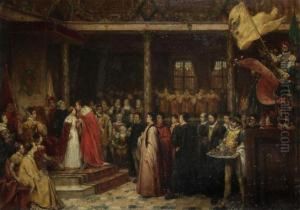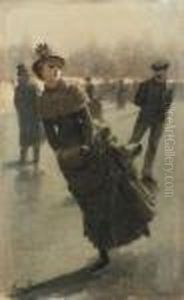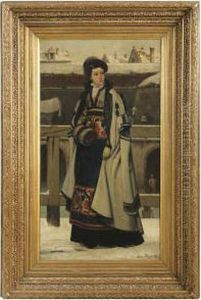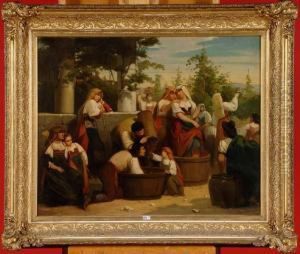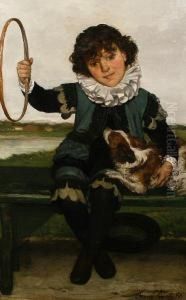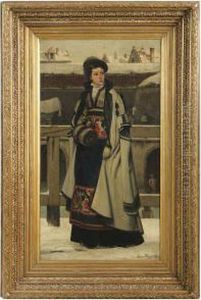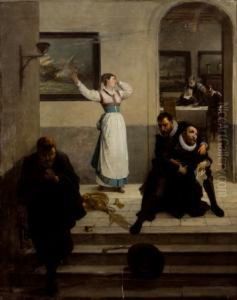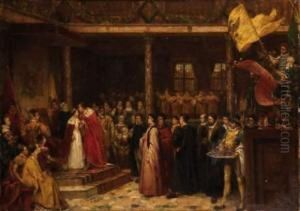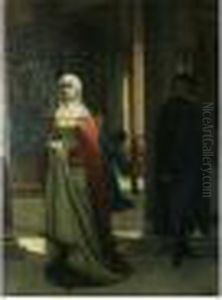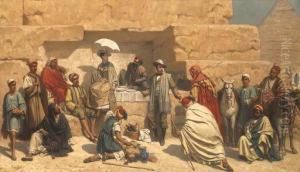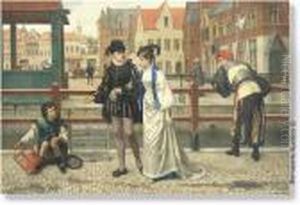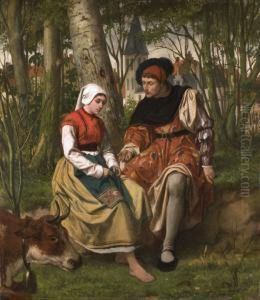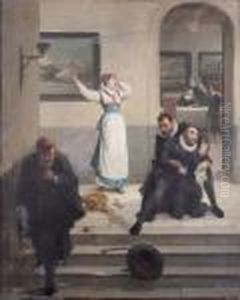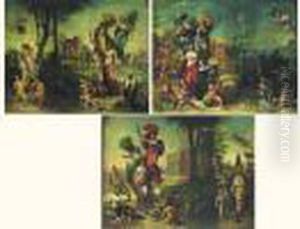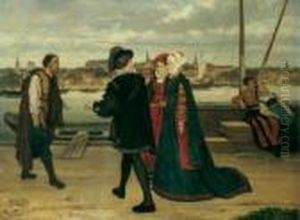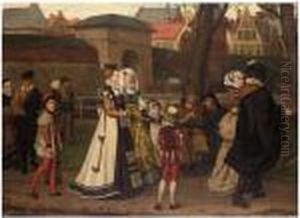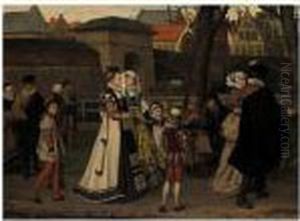Frans Vinck Paintings
Frans Vinck was a Belgian painter, born in Antwerp on December 25, 1827, and passed away in his hometown on February 10, 1903. Rooted in the Romantic tradition, his oeuvre is distinguished by its historical and genre paintings, reflecting the vibrant cultural milieu of 19th-century Belgium. Vinck's artistic journey commenced at the Royal Academy of Fine Arts in Antwerp, a prestigious institution where he honed his craft under the tutelage of eminent painters such as Gustaaf Wappers and Nicaise De Keyser, both of whom played a pivotal role in the Belgian Romantic movement.
Vinck's work often delved into historical themes, drawing inspiration from Belgium's rich past and European history at large. He had a penchant for dramatizing historical events, imbuing his paintings with a sense of narrative depth that captivated viewers. His genre scenes, on the other hand, provided insightful glimpses into the daily life of his contemporaries, showcasing his keen observation skills and empathy for the human condition.
Throughout his career, Vinck enjoyed considerable acclaim, participating in numerous exhibitions both in Belgium and abroad. His contributions to the art world were recognized with several awards, and his works found their way into the collections of various museums, affirming his status as a significant figure in the Belgian art scene of the 19th century.
Despite his success, Frans Vinck remained deeply connected to his roots in Antwerp, where he was an active member of the local artistic community. He contributed to the development of the next generation of artists through his involvement with the Royal Academy of Fine Arts, fostering a nurturing environment for artistic growth.
Vinck's legacy is that of a painter who masterfully captured the essence of his era, both in the grandeur of historical epics and the intimacy of genre scenes. His ability to traverse these genres with ease and depth has cemented his place in the annals of Belgian art history. Today, his works continue to be celebrated for their historical significance and artistic merit, offering a window into the soul of 19th-century Belgium.
